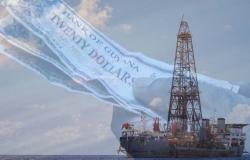
The EOLO group of the University of the Basque Country (UPV/EHU) has presented an innovative method to analyze the long-term mechanical fatigue of floating offshore wind turbines. This advance, led by researcher Alain Ulazia, promises to optimize the useful life of these structures and evaluate their viability in different locations.
Using data wind and wave history Recorded between 1920 and 2010 at a high-energy site on the west coast of Ireland, Ulazia and his team analyzed the evolution of maritime conditions. With this information, generated a mathematical-statistical model that allows calculating the mechanical fatigue that floating wind turbines can withstand due to these conditions. This innovative model offers the ability to estimate the useful life of turbines based on the meteorology of a specific site.
Suitability
In their study, the EOLO research group developed a method to determine “the suitability of installing floating wind farms at a specific location.” This includes assess the likelihood of turbines experiencing mechanical fatigue or facing extreme offshore conditionseven in high energy sites.
“The biggest question in offshore wind generation is how weather conditions will influence energy production,” Ulazia said. However, his research went further and focused on the mechanical fatigue of turbines, considering final breakage due to repetitive shocks and stresses that do not break the material on their own. “Sea conditions can reduce the useful life of floating turbines. Some parts of the turbine, instead of lasting 20 years, could only last 15 years, which significantly impacts the cost and investment of the project,” the researcher explained.
Maritime conditions
The EOLO group has been working for years on projects related to meteorology, climate and the environment. According to Ulazia, “we have carried out numerous studies on the long-term relationship between climate change and the generation of renewable energy, making historical studies and projections for the future.”
The study focused on a high-energy location in Ireland, using historical data from Galway Bay, in collaboration with Maynooth University’s Ocean Energy Research Centre. These data made it possible to determine the evolution of maritime conditions and create a model that represents long-term fatigue in wind turbines, which can be applied to future projections.
Simulation
To validate their method, the researchers ran simulations to calculate the energy produced by floating turbines in eight likely offshore scenarios in Galway Bay, also looking at mechanical fatigue in specific components. “We use an simulator which shows us in seconds the ‘dance’ of the turbine due to waves and wind, and we developed a method to implement changes in long-term maritime states and determine the evolution of fatigue,” explained Ulazia.
Although the method was initially applied in Ireland, “it is universal. We can do the analysis anywhere in the world“said the researcher. He highlighted that although offshore wind energy is very suitable due to its low turbulence compared to onshore, it requires considerable investment in the maritime environment, which is a significant challenge.





